Chemists in Canada have uncovered a surprising conformational effect using cyclopropane that provides a way to influence the position of substituents on six-membered rings. Here groups favour the axial orientation, which is usually more unstable, and the effect ‘grows more significant as alkyl groups get larger, which is quite different and unique,’ says James Gleason, who led the work at McGill University. He thinks the ‘really unusual stereocontrol element will be useful in a wide range of applications’, in particular in medicinal chemistry, ‘where the ability to extend groups into specific conformational space is crucial in developing potent molecules.’
Cyclohexane is a volatile, alicyclic hydrocarbon consisting of six carbon atoms. Its functionally substituted derivatives have diverse biological properties and unique conformations, making them the target of worldwide drug development studies. For example, many anti-convulsant, anti-inflammatory and anti-depressant drugs contain cyclohexane rings.
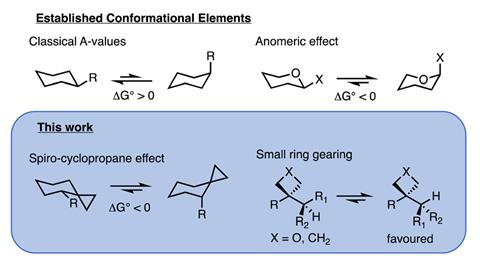
The chair is the most stable conformation that a cyclohexane ring can adopt. Each face of the ring alternates between axial bonds, which lie parallel to the ring axis, and equatorial bonds which are located about the periphery. Cyclohexane substituents can adopt either position, but steric hindrance in the axial location means the equatorial conformer often predominates in the equilibrium. However, during an organocatalytic Cope rearrangement, Gleason and his co-worker Anthony Izzotti made an unusual observation.
They found that alkyl groups adjacent to cyclopropane in chair-like transition states preferred the axial orientation. ‘The reaction had the complete opposite stereochemistry to our prediction, requiring a benzyl substituent to occupy an axial position. This was completely unexpected,’ says Gleason. Although other chemists have previously observed that α-ethers and acetates adjacent to spirocyclopropanes prefer to be in an axial position, the team set out to explore whether this effect could apply to a broad range of groups.
With this in mind, they synthesised various alkyl-substituted spirocyclopropanes, such as those with methyl, ethyl and tert-butyl groups, by olefination and cyclopropanation. The energy difference between the alkyl group in both conformations was more negative when the groups were adjacent to spirocyclopropane, compared to the simple cyclohexane or when next to a dimethyl substituent. Besides the methyl group, where both conformations were roughly equal in energy, all alkyl groups preferred the axial conformer.
Moreover, larger alkyl groups experienced a greater shift towards the axial position due to increased torsional strain, and in some cases hyperconjugation, with spirocyclopropane. In fact, isopropyl and tert-butyl were exclusively axial. ‘I was surprised by the immense conformational effect observed for a tert-butyl group,’ says Jonas Brånalt, a senior synthetic chemist at AstraZeneca in Sweden. ‘The team also compared the results to the corresponding dimethyl substituent, which was nice to see, and there they don’t really see much of a difference compared to the unsubstituted case.’
Heteroatoms and a range of π- and electron withdrawing groups also preferred the axial conformer when adjacent to spirocyclopropane. However, along with steric effects, stereoelectronic factors between substituents contributed. ‘The differential behaviour between alkyl-substituted cyclohexanes and halides, with respect to torsional versus stereoelectronic factors is particularly fascinating and worthy of further investigation,’ says Margherita Brindisi, an expert in medicinal chemistry from University of Naples Federico II in Italy. ‘The clarification of these elements will be of key relevance not only for medicinal chemistry but also for the design and application of cyclic catalysts.’
Brånalt adds that the concept provides ‘a useful tool for drug designers to alter the conformation of some of the most common scaffolds used in medicinal chemistry.’ The McGill team is interested to see if the effects can apply to larger rings in the future.
References
This article is open access
Anthony Izzotti and James L Gleason, Chem. Sci., 2024, DOI: 10.1039/d4sc05470a


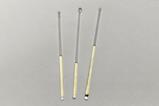
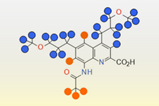
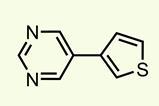
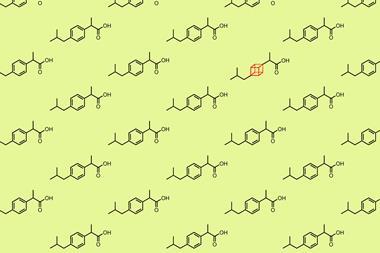
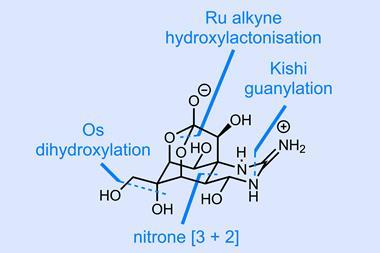
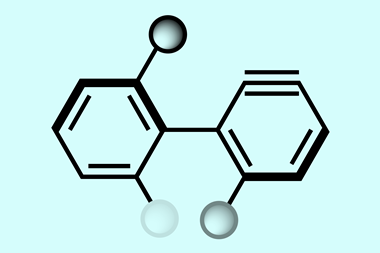
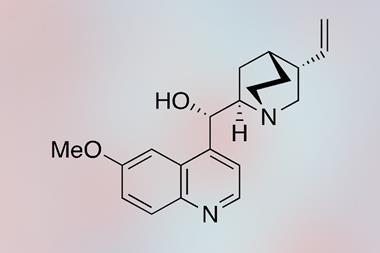

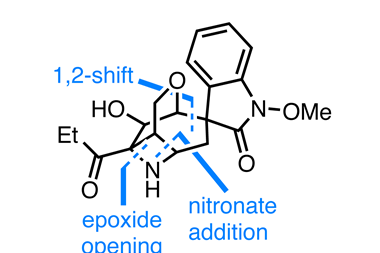






No comments yet